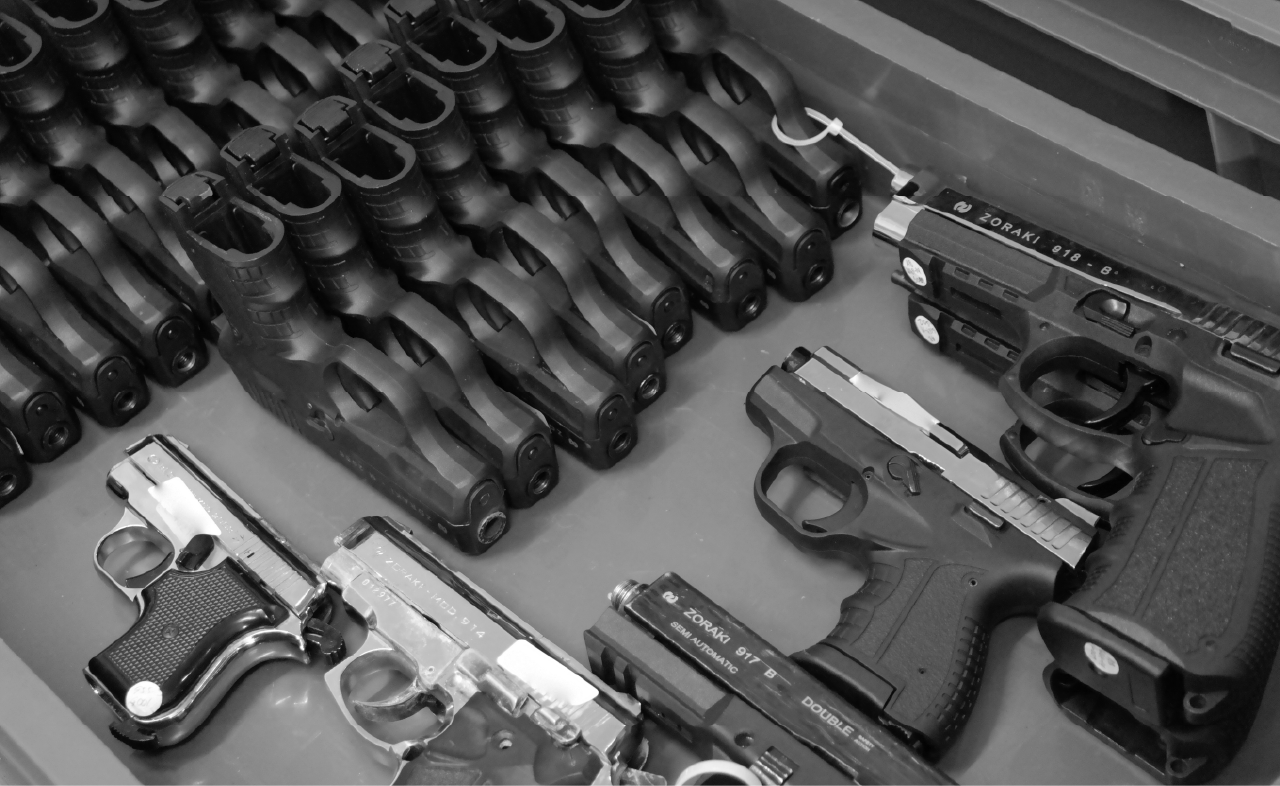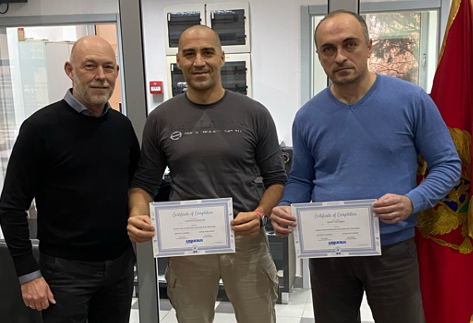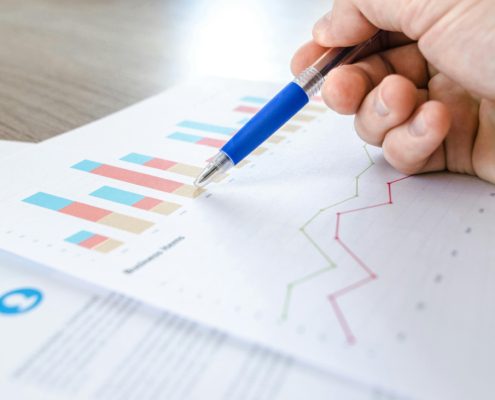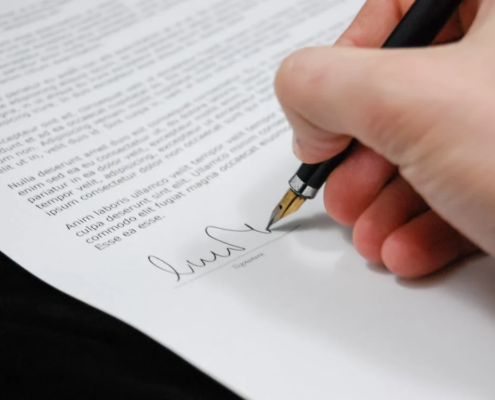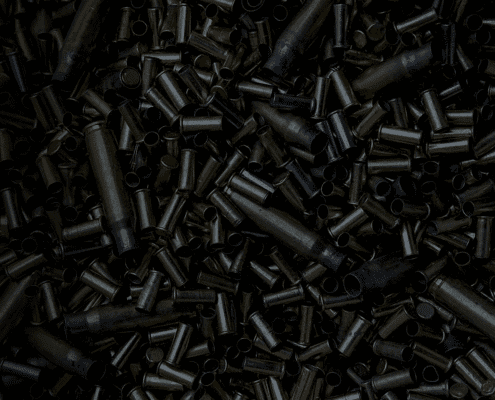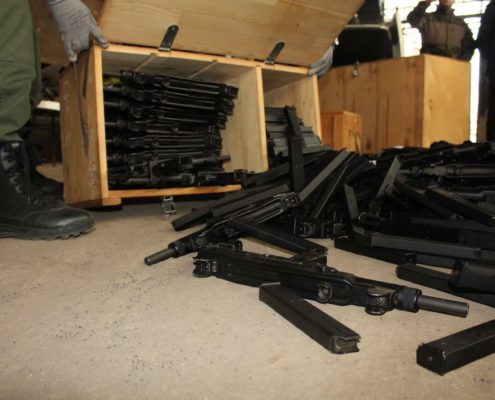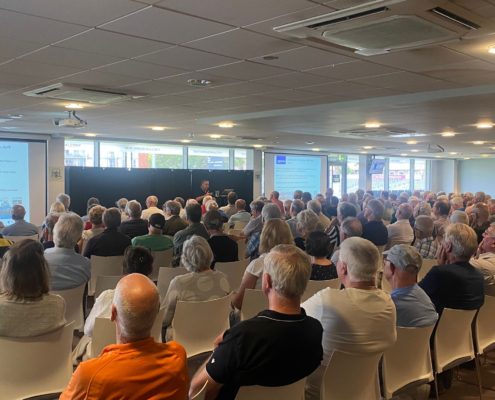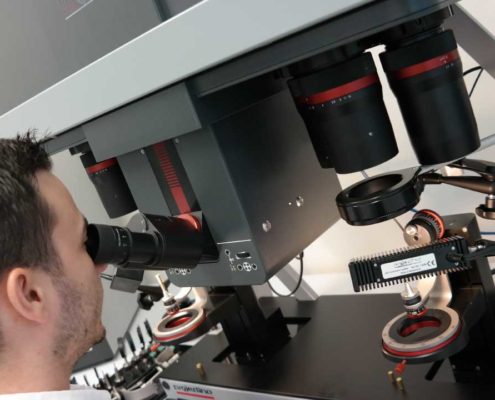 https://arquebus.uk/wp-content/uploads/2025/11/blog-cropped-v1-scaled.jpeg
1695
2560
Glenn Lawrence
https://arquebus.uk/wp-content/uploads/2022/02/Asset-1arquebus_logo.svg
Glenn Lawrence2025-11-24 09:38:142025-11-24 09:48:05Advancing Forensic Excellence in Montenegro: Ballistic Shooting Scene Incident Reconstruction Training
https://arquebus.uk/wp-content/uploads/2025/11/blog-cropped-v1-scaled.jpeg
1695
2560
Glenn Lawrence
https://arquebus.uk/wp-content/uploads/2022/02/Asset-1arquebus_logo.svg
Glenn Lawrence2025-11-24 09:38:142025-11-24 09:48:05Advancing Forensic Excellence in Montenegro: Ballistic Shooting Scene Incident Reconstruction TrainingThe proper marking of small arms, light weapons (SALW) and their ancillaries (ammunition, controlled accessories, and essential components) is vital to detect and disrupt the diversion of SALW into illicit circulation. Marking facilitates record-keeping and tracing, key building-blocks in a National SALW Control Strategy (NSCS) that makes societies safer and reduces the likelihood of weapons being misused.
Arquebus talks to Henry Leach, Head of Operations for Conflict Armament Research (CAR) in Somalia, to discuss CAR’s SALW work in Somalia and the key role marking plays in a NSCS.
§
The majority of SALW in illicit circulation today are legally manufactured with the authorisation of national governments. It is only when SALW enter circulation that they risk being diverted into illicit circulation, potentially enabling armed violence, organised crime, and insecurity.
Effective weapons and ammunition management (WAM) helps authorities prevent the diversion and trafficking of SALW and ancillaries through ensuring “oversight, accountability and management of arms and ammunition throughout their lifecycle” (UNIDIR, 2023). Previous posts in the NSCS series on civilian licensing and registration and the lifecycle management of state-owned SALW have covered the importance of maintaining strict control of SALW from import or manufacture through to eventual destruction or export.
Marking SALW and ammunition is the foundation to SALW lifecycle management. Typically, unique alphanumerical codes, QR codes, or symbols, applied markings ensure the object itself is distinguishable or provide information relating to associated natural or legal persons, or lifecycle transactions history. Marking is therefore a prerequisite to the registration and tracing of SALW, which enables authorities to link each object to a unique record, identify its last legal owner, and provide insight on the object’s lifecycle.
SALW can be marked at various points throughout the lifecycle. For example, identifying markings are typically applied during manufacturing, indicating manufacturer, country of origin, calibre, or type, in addition to a unique serial number. Markings may also be applied to improve the traceability of SALW, such as import markings detailing the country and year of import, or assignment markings which specify the state agencies or units to which SALW have been assigned. Further markings might also be applied when SALW have been proofed, transferred from state to civilian possession, when seized by authorities, or upon deactivation.
There are a variety of marking techniques that can be utilised depending on the material and type of object, as well as the technology and resources available to the marking authority, such as stamping, dot-peen, and casting. Promising advanced methods are also being developed, such as chemical taggants, which assist in the identification and tracing of SALW through applying unique information-bearing chemical additives to the weapon or ancillary. Whatever the technique used, markings, at a minimum, should always be “easily identifiable, difficult to alter or remove and, if altered or removed, easily recoverable through technical means” (OSCE, 2003: 6).
Marking has featured in international efforts to combat illicit SALW proliferation since the late 1990s. The UN Firearms Protocol legally binds states to ensure the placement of identification, import, state to civilian transfer and deactivation markings, as well as requiring the criminalisation of marking alteration, obliteration, or removal. The International Tracing Instrument (ITI) makes recommendations on the content and location of markings to improve SALW traceability in support of the UN Programme of Action. At a regional level, the European Council Implementing Directive 2019/68 establishes technical specifications for the marking of firearms and their essential components within the European Union.
Equally important to a NSCS is the lifecycle management of ammunition. Like weapons markings, ammunition markings enable authorities to identify and detect diversion, whilst also providing safety information to reduce the risk of unplanned detonation. Markings on the cartridge headstamp typically indicate the manufacturer, factory, calibre or type, and year of manufacture. Information vital to tracing and safety such as the quantity, type, calibre, and lot or batch number, plus the storage, handling, and transportation instructions, are usually found on the packaging.
Whilst global standards for marking ammunition are much less developed than those that apply to weapons, the issue has seen growing recognition within the international SALW control community. For example, the recent UNODA Global Framework on Ammunition Management and International Ammunition Technical Guidelines sets specific objectives and practical guidance relating to the proper marking of ammunition and packaging.
Arquebus is delighted to welcome Henry Leach, Head of Operations for Conflict Armament Research (CAR) in Somalia, to give his unique insight into how SALW marking, and other WAM practices can be harnessed as part of a NSCS in fragile contexts like Somalia.
§
Firstly, Henry, please could you introduce yourself and give our readers an outline of CAR’s work?
CAR is a UK-based investigative organisation focussed on documenting, tracking and tracing weapons and their ancillaries that have been recovered in conflict zones around the world. Our areas of operation include West Africa, the Horn of Africa, the Middle East, and Eastern Europe.
Our focus historically has been on SALW, but we have expanded our scope over time to include IED parts and components and, most recently, we’ve concentrated on the tracking and tracing of semiconductor and microelectronic components recovered from the debris of advanced conventional weapon systems such as cruise missiles and UAVs recovered in Ukraine.
I joined CAR five years ago and am now responsible for the Somalia operation in Africa. This encompasses a few things. Firstly, participation in the Joint Verification Team (JVT), which is a UN mandated transparency measure for verifying imports of weapons into Somalia. Second, is the development and implementation of a national weapon and ammunition management database, which is currently in use by the Somali Police Force and will be rolled out to the Somali National Army later this year. Thirdly, support to the Federal Government of Somalia in the documentation and analysis of captured weapons, as and when we can gain access to them.We have also trained and equipped members of the Somali security forces to undertake this kind of work.
We understand that CAR has been active in Somalia, helping authorities enhance their weapons and ammunitions management (WAM) – could you give some background on the security context in Somalia?
As many people will know, Somalia has been subject to various stages of conflict for the past few decades. It lacked an internationally recognised government since the collapse of the Siad Barre regime in 1991 up until the formation of the current government in 2012. The absence of central government contributed to sustained demand for weapons as different groups competed for resources, land, power, and influence. At the same time, ordinary citizens acquired weapons to protect themselves, their families, and their livelihoods.
Somalia is more stable now, although there remains a persistent threat from the terrorist group Al Shabaab, as well as a growing threat from other terrorist actors in the north of the country. Clan conflict has long been a feature of the security landscape in Somalia, a recent example of which has been the territorial clashes in Las Anod intensifying throughout 2023. The transfer of political power from one party to another has also been a source of tension. All this drives demand for weapons amongst security forces, armed groups, and the population in general.
This insecurity means the degree to which rule of law exists varies throughout the country. A lot of the population, especially outside of urban centres, really feel the need to have their own personal weapons to protect themselves and their family, compounding this, there is also a longstanding culture of weapon ownership.
The source of illicit weapons can be broadly categorised is two ways: internal diversion from security forces and illicit trafficking into Somalia. Historically, diversion from security forces was a significant source of illicit weapons, but the government has made huge strides in their WAM practices, specifically their PSSM and accountability measures. This isn’t to say that it doesn’t still happen – Al-Shabaab occasionally overrun Somali bases and capture state weapons, but we believe the most significant source of illicit weapons is now from weapon trafficking networks bringing weapons in from overseas.
There’s a highly active arms trafficking trade in the region with supplies often being funnelled to Somalia from other countries. During our work, we’ve seen linkages between weapons in Somalia and the conflict in Yemen, with very strong evidence to suggest that weapon supply lines to Yemen are linked with those of Somalia with traffickers taking advantage of the higher prices they can usually receive for their weapons in the market in Somalia.
Can you briefly explain the project in Somalia and its intended impacts to our readers?
For background, there was a total arms embargo on Somalia since early 1992. In 2013, the UN partially lifted the embargo to recognise that there was now a government that was starting to coalesce, as well as security forces that were starting to emerge under a defined architecture. There was also recognition that those security forces needed to be properly equipped to defeat Al-Shabaab.
The partial lifting of the embargo was partially contingent on a transparency measure known as ‘end user verification,’ which was carried out by the Somalian government together with an external observer forming the ‘Joint Verification Team.’ CAR was selected as the external observer entity, our core mandate being to conduct audits on weapons held by security forces to ensure that imported weapons remained under the custody of the Somali national armed forces.
Initially, the JVT encountered many challenges relating to access, security, logistics, resources etc. However, over time the process became digitised with the introduction of a mobile phone-based data collection application that allowed the security forces themselves to digitally photograph and register their weapons systematically with verification being done remotely. The mobile application accelerated the verification process hugely and formed the basis for our work developing a national WAM database as well as supplying weapon marking machines which are used to apply government end user markings to weapons.
Prior to the introduction of the WAM database, the only way to identify a weapon on the spot without looking through reams and reams of importation documents, which weren’t necessarily centralised, was to look for a government end user mark on the weapon. If a government mark could be found, then it could be confirmed that the weapon had been in the custody of one of the branches of the Somali armed forces at some point in its lifecycle.
CAR appreciates the importance of post-production marking for the purposes of counter diversion and tracing, so began to supply marking machines and instigate marking programmes throughout Somalia. CAR has now been doing this for the past 5 or 6 years.
The idea is that the security forces not only mark the new weapons as they’re imported into the country, but also proactively go out and mark any government weapons that have already been distributed many years prior without having first been marked. This really helps with the immediate identification of government weapons, allowing for better control and accountability over national stockpiles.
What methods of marking SALW do CAR employ in Somalia?
We only mark the receiver of weapons. We don’t get into component marking for various reasons. One is the resource burden associated with granular essential component marking, but also the fact that weapon parts in Somalia are often interchangeable. Over time weapons may be cannibalised to keep them going, rather than replace essential components with fresh components, with corresponding markings. It could confuse inventory management and tracing efforts, as the marks on a ‘Frankenstein’ weapon don’t correlate with one another.
Another reason is the type of marking tools that are supplied. Some of them are not suited to making very small granular marks on certain components like the tight curve on a barrel, for example. So, we aim for the low hanging fruit, as it were. We mark the easiest, flattest, largest surface on the main component of the weapon.
Typically, we use dot-peen marking. This is because there are very good dot-peen machines which are incredibly portable and lend themselves extremely well to marking weapon systems out in the field. It’s worth noting that many of the markings are done retrospectively in remote locations on ‘legacy’ weapons that have been in circulation with the armed forces for many years. The security forces in Mogadishu now also systematically mark all new weapons that arrive in the country.
Another reason for using dot-peen marking is the potential for serial number recovery post-obliteration. This is something that my colleagues in CAR are doing really good work on. With dot-peen marking you’re impacting the crystalline metallic structure under the surface to a reasonable depth. So, if someone then erases or obfuscates that mark, you’re still left with an imprint buried deep within the metallic structure of the weapon. There’s potential for that to be recovered later using non-destructive serial number recovery techniques that CAR is currently pioneering.
Part of CAR’s work in Somalia is to aid authorities in managing SALW captured/surrendered from non-state armed groups – how do you trace these weapons and what role does marking play in this process?
A key pillar of the Federal Government of Somalia’s WAM strategy is the analysis and tracing of captured weapons, the reason being that the government wants to try and understand the provenance of Al-Shabaab weaponry to a greater degree.
Firstly, I’d say that the tracing process for captured weapons is highly dependent on where the weapons are captured and by whom. If they’re captured in the context of a high-profile attack in Mogadishu, then there’s a greater chance that a more robust analysis to uncover the weapons provenance will take place. There’s a higher chance that they’ll end up at the Ministry of Justice as evidence and may have passed through a ballistics laboratory to be subjected to a level of forensic analysis. But if weapons are captured during operations, away from major urban centres, it’s unrealistic to expect this to happen due to operational constraints.
In these instances, weapon markings are particularly important. Government end user markings can be used to identify a captured weapon as having previously belonged to the government. The existence of a centralised database means that weapons can now be linked back to a particular unit or individual, providing much more insight into the circumstances of its diversion. For example, if a lot of captured weapons had previously been assigned to a single unit, then someone in that unit might be responsible for systematically diverting weapons. The government can then investigate this and put a stop to the diversion. I’m not saying that’s necessarily the case, but that’s the theory.
So, marking primarily allows you to pick up a weapon and immediately identify it as having belonged to the government at some point. The next thing you do is input the serial number into the national database. If the weapon is registered, it can tell you which unit it came from, which individual it was assigned too, how long ago it was registered – information that might tell you how it may have gotten into the hands of an unauthorised end user.
Luckily, in our experience, serial number obliteration in Somalia is extremely rare as of now. This is perhaps because there hasn’t previously been an effective weapons registry, so there was an environment of impunity. Everyone knew that no one could really check where or to whom the weapon was assigned. But now I think it’s becoming more of a thing. I don’t think our data noticeably shows obliteration becoming more prevalent yet, but I expect that it might over time.
Another aspect to managing captured weapons is regional tracing. The Regional Centre for Small Arms (RECSA) have been pushing to implement a standardised marking regime in the region. They’ve promoted the Nairobi Protocol marking measures, requiring Member States to have the two letter ISO code of the country marked on government-held weapons. This means that if a Somalian government weapon were to be recovered in, let’s say, Ethiopia, then the authorities would be able to instantly recognise it as a weapon belonging to Somalia.
We also consider import notifications for tracing captured weapons. As part of the JVT, we maintain a master list of serial numbers of all the weapons that have been imported. This has acted as rough and ready database. It’s not perfect though – sometimes we’re notified with abbreviated serial numbers or with generalised weapon designations which frustrates the process of tracing and verification.
Finally, we run serial numbers of captured weapons past other databases that CAR has access to. In our global database, we look for close serial number proximities or matches. We also have some other data sets that we contribute to which could potentially be useful to the tracing process.
What key challenges has CAR faced during its mission in Somalia?
Access is always a big challenge – authorisation from those at the top of the chain of command does not always translation to access on the ground.
There’s also the logistical effort of getting the team to a remote location, with the necessary security in place, and then getting access to that facility within a narrow time window. It might be that the person with authority to grant access isn’t in the area at the time, making it all a waste of effort and resources.
Another key challenge has been that the government security forces don’t always keep their weapons in armouries. Usually, weapons are in short supply and will be distributed immediately from the central armoury in Mogadishu to personnel on deployment. We can’t really go to forward operating bases due to the inherent security risk and we cannot therefore register or mark weapons whilst they’re being used in the field.
During COVID-19, we couldn’t even get our people into Somalia. We just weren’t getting the data we needed for our mission, on top of the other issues I’ve just described. To overcome this, we developed a data collection platform, with the idea being that the security forces themselves would go around and systematically photograph, mark, and register weapons. We can then check the veracity of it remotely by looking at the metadata that’s contained within the images of the weapon and confirm the location through automatic geotagging.
Regarding actual marking practices, I’d say there aren’t too many problems in the way Somalia is marking its weapons. Because markings are often done using mobile machines, they might not always be perfect, but they are still perfectly legible.
There have been many marking programmes initiated by various NGOs over the years, some of which have used slightly different marking regimes which could lead to confusion if someone is unfamiliar with markings. Some of the previous regimes have incorporated the weapon’s serial number or an element of the serial number into each mark they make. We don’t do that and favour genericised markings instead – the rationale being that the weapon already has a manufacturer serial number which acts as a unique identifier. This allows us to mark weapons at a much higher rate whilst keeping things simple, which is necessary to meet the need for weapon marking in Somalia.
In December 2023, the UN lifted all restrictions on arms supplies to the Somalian government following technical assessments noting the “positive trajectory” of their WAM – what is the future of WAM in the post-embargo era?
We’ve just hosted an event on this very topic at the Fourth Review Conference for the Programme of Action on SALW (RevCon4) in partnership with the Federal Government of Somalia and the HALO Trust. The event highlighted the positive trajectory of WAM since the launch of the JVT.
Even in the 5 years I’ve been working there, there has been significant change. Before, registering weapons was all quite ad hoc, using paper-based systems that weren’t immediately accessible. Weapons were typically accounted for by quantity as opposed to by individually recording serial numbers.
Fast forward five years and there is now a centralised, digital system that is actively used daily that not only links an individual person to an individual weapon, but also tracks the history of a weapon throughout its lifecycle. It’s like night and day.
The RevCon event also discussed what’s currently missing and what needs to be done. There’s recognition of the fact that, despite the great work that’s been done by the government and its partners on weapons management, there’s much work to be done on ammunition management.
There’s a lot of effort and resources being put into building ammunition storage facilities and training personnel to handle ammunition safely by organisations like the HALO Trust. But fundamentally, ammunition is harder to manage. Even registering ammunition onto databases is something that’s not really done now to the degree that it should be.
Once removed from its original packaging, ammunition, particularly small arms ammunition, tends to be incredibly difficult to trace. There could be tens of millions of rounds produced with the exact same headstamp and those rounds could have been exported to 10 or 15 different countries. So, tracing from a headstamp alone will be of very limited use.
However, there are new technologies coming through that can help with this problem. CAR is now involved in launching a chemical taggant known as AmTag. This is a chemical that can be produced in individually identifiable batches, which allows you to trace at a more granular level. The taggant can be applied during the manufacturing process or post-manufacture within armouries, for example, by means of an atomising spray. Upon recovery, the chemical can be sampled, and the unique chemical code can be extracted allowing for a link to be made to that specific batch of chemical taggant. This isn’t used in Somalia now but there’s definitely great potential for it to improve the effectiveness of tracing ammunition in the future.
So, in terms of the post-embargo era, the key message is that things in Somalia have massively improved, but the job isn’t done and it’s vital to sustain the positive momentum.
What role can it play in NSCS in contexts like Somalia?
I think it’s important that a NSCS ensures that authorities can mark weapons in a mobile fashion, especially if the programme is being implemented in a fragile setting like Somalia.
Often countries that suffer from insecurity don’t have the benefit of possessing a weapon stockpile that has been comprehensively marked and registered. Weapons need to be retrospectively marked, and you need to send out mobile teams to mark weapons in a sustained and systematic fashion. One of the key tools that enabled us to achieve what we have in Somalia are these mobile marking machines that can be carried into remote locations and run off batteries. This means we can offer countries like Somalia a dynamic marking programme that caters for their specific needs, improving overall WAM and government accountability over its stockpiles.
§
In summary, this blog post and Q&A has delved into the ways in which marking SALW and their ancillaries supports a successful NSCS and has demonstrated the tangible improvement proper marking practices can make to WAM in contexts like Somalia.
Next month’s blog post shall explore the ways effective physical security and stockpile management (PSSM) can help prevent the diversion of SALW into illicit circulation, as well as improve public safety by reducing the risk of unplanned detonations.
